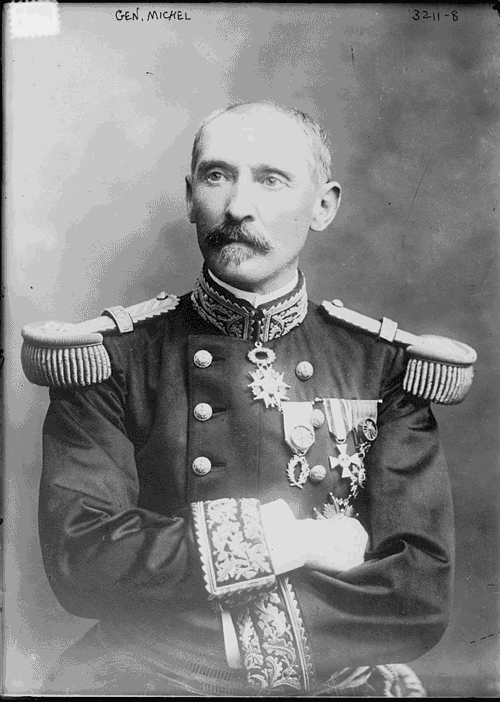I was surprised to find that so many of the photographs chosen by Weir were taken during the Great War. Perhaps I shouldn’t have been. Artists have long drawn from traditions of absurdity and surrealism to understand and express the horrors of war. I used Google Image Search to track down the original images and have included a description and a link to the original source below.
Another image from the Bain News Service which dates around 1914-15. This comic photograph, which depicts a wine barrel mounted to a cart, is titled ‘French 42cm gun’. The real 42cm howitzer gun, known as ‘Big Bertha’, was developed by a German armament manufacturer, Krupp, on the eve of the Great War. GIF animation: Peter Weir. Image source: Library of Congress.
This photograph has taken during 1914-15 in in Suwalki, Russia (now Poland) and depicts a Russian Orthodox priest praying for wounded soldiers in a make-shift military hospital. GIF animation: Peter Weir. Image source: Library of Congress.

This photograph of General Victor Michel was taken between 1910-1915. In the years preceding the Great War, Michel became convinced that German forces were most likely to invade France through Belgium, anticipating the Schlieffen Plan. His peers did not agree and he was later demoted. GIF animation: Peter Weir. Source: Library of Congress.
Should historians harness the hottest trend in digital storytelling?
Is Weir is making history? In an interview with Wired Magazine, Weir stated that ‘I just stare at the picture for a while and things start coming to me that I want to bring to life’. He does not provide historical context for his GIFs, nor a link to the original archival image. Rather he looks for ‘great compositions and compelling characters’. He appears to be more inspired by Monty Python and HP Lovecraft than any aspiration for historical truth. Nevertheless, Weir’s surreal creations - funny, confronting, haunting and emotive - reveal great potential for historical storytelling. Is it time that public historians, especially those working online, considered the GIF a creative medium?
GIFs are not a new technology but they have come along way from their 1990s heyday when their small file sizes befit the speed of dial-up internet connections.
 |
| The acronym GIF stands for ‘Graphic Interchange Format’ and is pronounced ‘jif’. |
In an era of high speed internet, these simple animations have undergone an astonishing renaissance. GIFs have never been so easy to make and share, and the technology is widely supported across a range of devices and platforms.
Most importantly, the medium is highly expressive.
We live in a visual age. Virtually all mobile phones have cameras and we now communicate with images as much as text. Social media platforms such as Facebook and Twitter have responded to this shift by making images more central to their user interface. Other social platforms - such as Snapchat, Instagram and Vine - use images and video as the primary method of communication.
In this new world, the humble GIF should not be underestimated. Animated GIFs have the potential to be more emotive than a still image, but are less effort to watch than a video. For this reason, popular social news channels such as Buzzfeed and Upworthy use GIFs liberally as a digital storytelling medium in viral posts. More recently, visual artists have begun to experiment with GIFs as a new art form. Traditional news media, including The Washington Post and The New York Times have also started cautiously experimenting with the medium.
Should public historians consider the GIF? Or is it just a novelty format, best left to celebrities and cute cats? Do we run a risk of trivialising historic subject matter, rather than promoting a deeper, more complex, engagement with the past? These are all valid and important concerns.
And yet, Weir’s captivating work seems to hint at new possibilities.



No comments:
Post a Comment